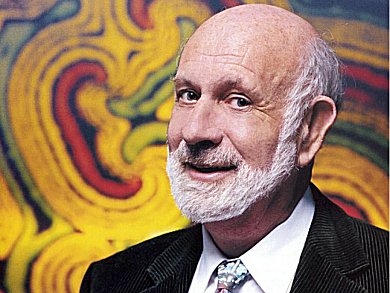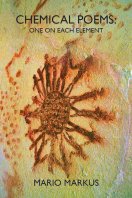To date, 118 chemical elements have been found. Professor Mario Markus, Max Planck Institute for Molecular Physiology, Dortmund, Germany, takes a look at each element, presenting a poem based on its natural properties along with a scientific overview of each element.
All 118 poems – as well as some poems about elements that only exist in theoretical simulations – are published in the book Chemical Poems: One On Each Element by Mario Markus. ChemViews magazine will publish a selection of these poems over the next months.
Rubidium |
Rubidium |
|
|
Soft, silvery-white metal. Density: 1.53 g/cm³. Its melting point is 37 °C, rendering it a liquid on very hot days. It was discovered in 1861 by the Germans Robert Bunsen and Gustav Kirchhoff and named after the Latin word ruber for “red”, owing to the intense color of one of its spectrum lines. It exists in large quantities in old, massive stars, before they enter into their final phase, where they turn into white dwarfs [1]. Vapor turbines in power plants improve their efficiency (in the conversion of heat into electricity) if rubidium is used as a working fluid in them. The intake of rubidium salts is used to adjust the circadian rhythm, the internal, almost daily, “clock” of an organism [2]. In general, irregular physiological rhythms, the so-called chronopathological disorders, can be stabilized or adapted to environmental rhythms using rubidium. Atomic clocks, based on oscillations of rubidium are used in GPS systems, for example, in the Galileo spacecraft. These systems determine distances by measuring the travel time of radio waves. Their accuracy is to about one meter [3]. Another clock in connection with rubidium, in a much larger time scale, works in combination with strontium: the ratio of isotopes rubidium-87/strontium-87 increases after the solidification of a rock, so that the age of rocks from earth or from outer space can be determined in this way [4]. Rubidium chloride is used as an antiepileptic and antidepressant [5]. It also helps to resist infections by increasing the pH-value in the cells. [1] D. A. García-Hernández, Science 2006, 314, 1751–1754. [2] H. Klemfuss, D. F. Kripke, Pharmacology, Biochemistry and Behaviour 1994, 47, 409–412. |
The best you can do Engineers Use it as a timer
|
Professor Mario Markus, Max Planck Institute for Molecular Physiology, Dortmund, Germany.
www.mariomarkus.com
Chemical Poems – One On Each Element,
Mario Markus,
Dos Madres Press 2013.
ISBN: 978-1-933675-98-5
Perfectbound, 308 pages, English, $30

Interview with Mario Markus: Poetry and Chemistry,
ChemistryViews 2013.
https://doi.org/10.1002/chemv.201300010
The poems have also been published in German in:
- Chemische Gedichte,
Mario Markus,
Shaker Media, Herzogenrath, Germany, 2011.
ISBN: 978-3868587012
See all poems published so far by ChemistryViews.org





